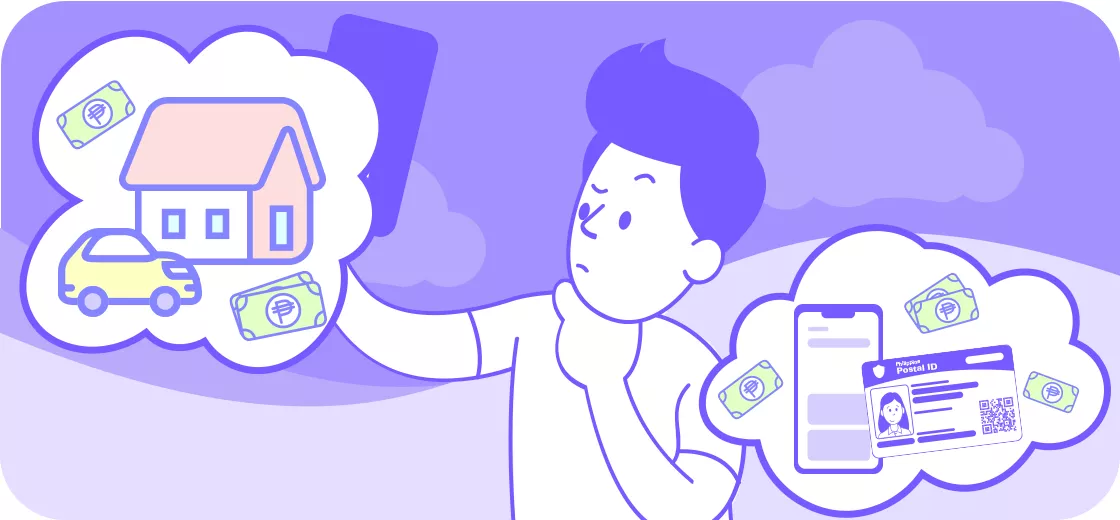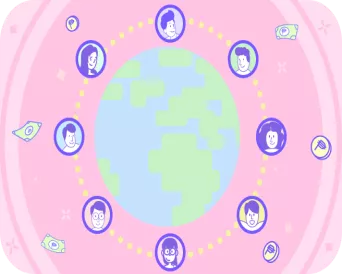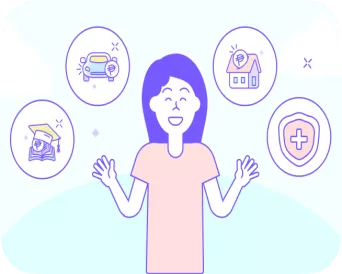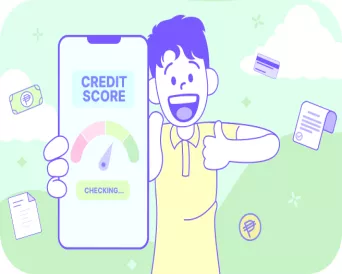A lack of knowledge about personal loans can lead to irresponsible borrowing habits. Even worse, it can lead to the fear of ever learning about your options which can open up opportunities.
Large loan amounts, low interest rates, and long installment periods can get almost anyone to commit blindly without reading the fine print or doing the proper research.
At the very least, you should at least know the different types of personal loans. Here in the Philippines, we have secured and unsecured loans.
What makes them different? What are the advantages and disadvantages of each? We’ll get to those questions in a second, luv, but before that, let’s review the basics: What are personal loans?
What are Personal Loans?
In a nutshell, a personal loan is borrowed money from either a bank, an online lender, or a credit union. You can pay back the amount through monthly installments, usually with a fixed interest rate.
The amount you can borrow varies from lender to lender, and you’ll have to prepare a couple of requirements before you apply.
Now that we’ve gotten that out of the way, you’re probably excited to dive right into the two different types of loans. Hold your horses.
The key to understanding the difference between secured and unsecured loans is this little thing in the banking world we call “collateral.” Essentially, it’s what sets them apart from each other.
So, to better understand the two types of personal loans, let’s take a brief detour.
What is Collateral?
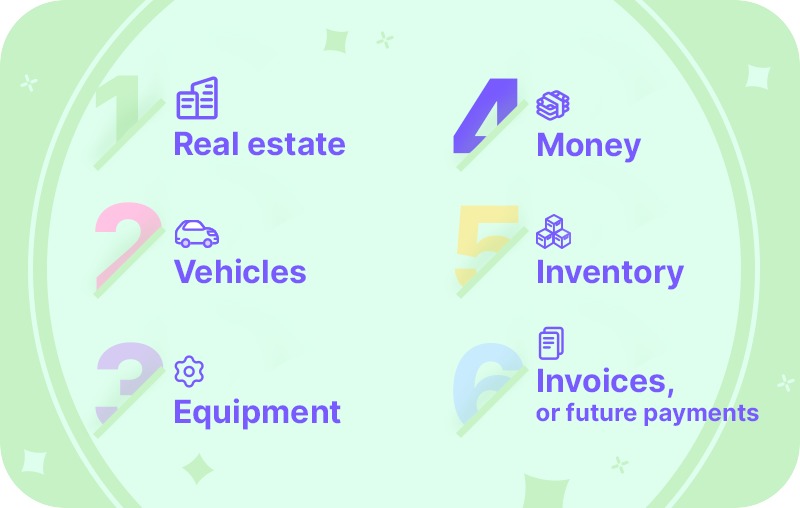
Collateral is an asset that you can pledge when borrowing a loan. In a way, it's reassurance for the lender that you have the means to pay the loan back.
If you're unable to repay the loan, the lender has the right to gain ownership of that collateral. Not everything can be used as collateral though. Here are a few types of assets that are commonly used:
- Real estate
- Vehicles
- Equipment
- Money
- Inventory
- Invoices, or future payments
Now that you understand what collateral is, it’ll be a whole lot easier learning about the two types of personal loans in the Philippines!
Secured and Unsecured Loans: What’s the Difference?
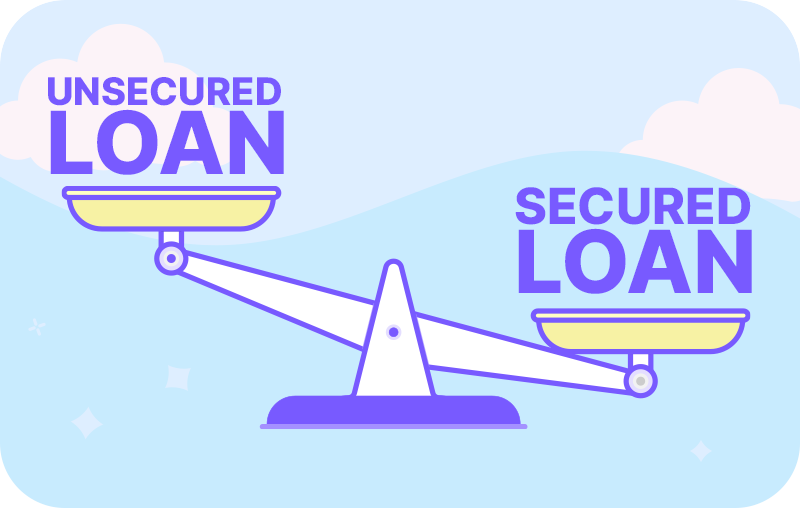
Let’s start with secured loans. Secured loans are loans that require you to pledge collateral. That’s why they’re sometimes called “collateral” loans.
Although there’s no guarantee that you’ll be able to borrow the loan amount you want, these loans are generally easier to get since it’s already “secured” with collateral.
As you may have already guessed, unsecured loans are different from secured loans in that you don’t need collateral in order to borrow. You’ll find this loan being offered the most by online lenders.
Now, you may be looking at these definitions of secured and unsecured loans and thinking, “Is that it? Good. I’m ready to borrow then!”
Again, hold those proverbial horses, luv. Reign them in. Before you make your final decision, check out their pros and cons below.
Pros and Cons of Secured Loans
Pros
- Higher loan amounts – Since secured loans require you to pledge collateral, lenders are more confident that you can pay them back, giving you access to higher loan amounts.
- Lower interest rates – For the same reason as the higher loan amounts, you can get access to lower interest rates thanks to your collateral.
- Longer installment terms – Secured loans allow you to pay back over longer periods of time. This means you can spread the loan amount across several months or even years, making it feel less of a burden as you pay for it monthly.
- No need for an excellent credit score – Again, it’s all because of collateral. Lenders will still check your credit score, but it’s not the end-all-be-all since you’ve already proven you can pay it back.
Cons
- More interest with long-term payments – Extending your repayment for months or years may seem like the easy thing to do, but imagine the interest piling up every month. Make sure you think about that before you make a final decision on your installment terms.
- Could affect your credit score – The high loan amounts and long installment terms mean that this can be a serious commitment to make. Apply for secured loans only if you’re sure that you can handle the repayment.
- Lenders could seize your collateral – Not only could your credit score dip if you fail to repay the loan, but the lender could also seize your collateral to pay for the loan.
Pros and Cons of Unsecured Loans
Pros
- Fast and simple application process – The entire application process – including disbursement – is generally faster and more straight-forward compared to secured loans. Just like our Quick Loan, you can get approved quickly and conveniently from your Tonik App.
- Can be used for multiple purposes – While some secured loans offer flexibility, most can only be used for specific purposes such as purchasing a house or vehicle. Most unsecured loans, though, can be used for a wide variety of reasons such as investing in a business or paying for emergencies.
- No need to worry about collateral – Since you won’t have to pledge collateral in order to get an unsecured loan, you won’t have to worry about anything getting seized by the lender!
Cons
- Strict eligibility criteria – You can apply for unsecured loans with less hassle than a secured loan, but that doesn’t mean lenders would approve anyone who applies. They set eligibility requirements for age, employment status, and citizenship just to name a few. For example, you have to be an employed Filipino citizen aged 23-58 for our Quick Loan.
- Higher interest rates and lower loan amounts – Remember the lower interest rates and higher loan amounts for secured loans because of collateral? For unsecured loans, it’s the opposite. Since you’re not pledging collateral to borrow funds, there’s higher risk for lenders – thus, higher interest rates and lower loan amounts!
Apply for a Personal Loan in the Philippines with Tonik
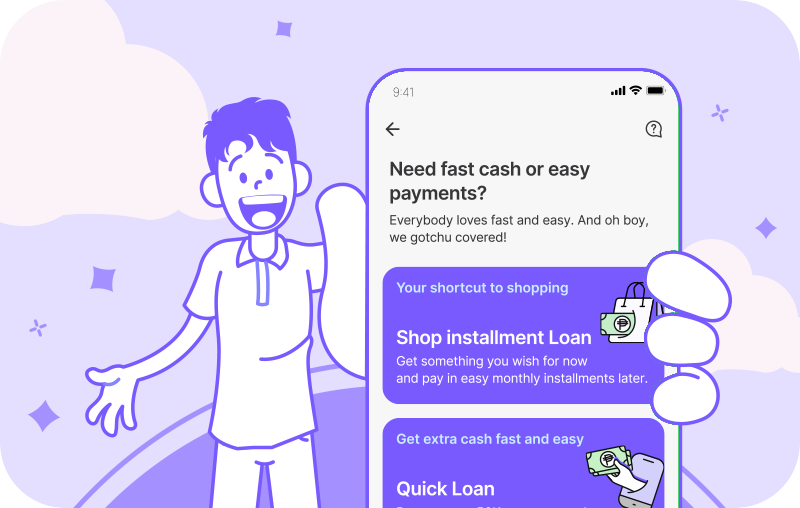
Now that you know the two types of personal loans here in the Philippines, you’re one step closer to apply for one!
It’s highly recommended that you shop around and do more research before taking out a loan. What better way to do that now by checking out our loans: Quick Loan and Shop Installment Loan
